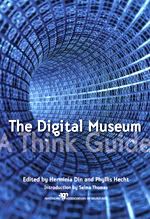A few years ago at my previous job, I engaged in a debate with some colleagues over whether or not we should set the staff up with the ability to send instant messages (IMs) to one another. I argued that instant messaging would allow us to communicate with each other more efficiently, but my boss argued that instant messaging would reduce productivity and weaken the staff's interpersonal connections. Needless to say, my boss won out. Not that I was bitter about it.
When I transitioned to my current position with the Center for Arts Management and Technology, I was pleasantly surprised to learn that the staff had incorporated instant messaging into the office's culture. Rather than calling each other's extensions or sending short e-mails back and forth, staff members send brief IMs to one another. In fact, instant messaging proved to be quite a valuable tool during my job transition. I frequently used IMs to ask questions of and gain clarity from my predecessor.
So has my experience with work-related instant messaging validated my argument from years ago and proven my boss wrong? Yes...and no.
Instant messaging has indeed proven to be wonderful tool for informal workplace communication - asking brief questions, sending quick reminders, sharing internet links, etc. The real-time rapid exchange not only fosters an immediacy of communication, but it also gives the user the feeling that they are engaging in a more personal conversation than e-mail. Correspondingly, the personalities of the users are often infused into the exchange. Rather than weakening interpersonal connections, instant messaging can actually strengthen these connections by providing the messengers with a personal medium for communication.
It hasn't replaced my use of e-mail or face-to-face meetings, but instant messaging has changed how I use these other means of communication with my colleagues. Now, I tend to use e-mail for formal messages as well as messages containing important details or information that the recipient may need to access later. While I still chat informally with colleagues in-person, a great deal of my face-to-face meetings with co-workers are used for brainstorming, problem solving and other collective business activities.
Now for the "No" part. I must admit that I do feel some pressure to interrupt my work throughout the day to answer instant messages as they appear, and it has impacted my productivity to some degree. There is a solution for this. I can change my online status to indicate that "I am currently unable to reply," or I can log out.
It sounds so simple, yet it truly requires a shift in my work habits. Over the years, I have developed the habit of responding immediately to incoming email and IMs. (I also do this with returning voicemail and answering incoming phone calls.) Now, I realize that in order to focus on particular tasks and work items, I need to turn off my IMs, close my email and turn off the phone. After all, if it's really important, they'll leave a message... Right?
Related items:














 The U.S. Library of Congress has formed a partnership with the photo-sharing site
The U.S. Library of Congress has formed a partnership with the photo-sharing site  Recently, the American Association of Museums published
Recently, the American Association of Museums published  Stanford Lively Arts, Stanford on iTunes U and iTunes have launched
Stanford Lively Arts, Stanford on iTunes U and iTunes have launched